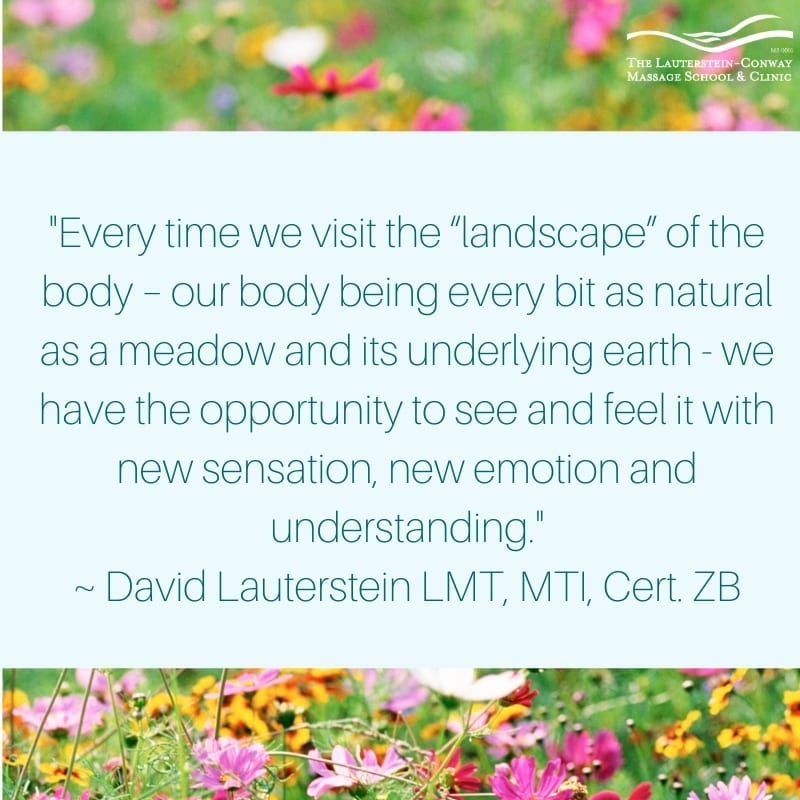 We know that touch can be meaningful, just like music. Yet can we say we “understand” touch, “understand” a massage? It is similar to understanding music. Music and touch don’t have meanings like words do. Perhaps both are rooted in the meaning of “gestures”, not in the definitions given in a dictionary. Music is created by gestures made upon instruments and resulting “gestures” in sound – similar to the way our tone of voice communicates as much or more than the meaning of our words. As a matter of fact, studies show that up to 93% of communication is non-verbal!
We know that touch can be meaningful, just like music. Yet can we say we “understand” touch, “understand” a massage? It is similar to understanding music. Music and touch don’t have meanings like words do. Perhaps both are rooted in the meaning of “gestures”, not in the definitions given in a dictionary. Music is created by gestures made upon instruments and resulting “gestures” in sound – similar to the way our tone of voice communicates as much or more than the meaning of our words. As a matter of fact, studies show that up to 93% of communication is non-verbal!
Of course massage therapists make “gestures,” non-verbal communications as well, through meaningful movements with their hands in contact with skin, fascia, muscle, and bone. And the client interprets those gestures with one of the most detailed senses we have – the kinesthetic sense. We can feel a touch that seems to stem from anger, from affection, from curiosity, from tentativeness, from consolation, from reassurance, from blessing. Touch can convey messages: I care about you. You are not alone. You can be free in your body and soul. You are a worthy person. There is hope. You are beautiful. You are strong. You are whole.
And the overall cumulative meaning of these touches, in the best of therapy, results in an experience that is meaningful and sometimes even transformative. A massage initiates multiple associations and is a kinesthetic system that is enjoyed and may persist in consciousness. But if we were to ask the therapist or the client what it means, they couldn’t say, could not reproduce the experience – as in music again, as the jazz great, Eric Dolphy said, “When you hear music, it’s gone in the air, you can never capture it again.”
Sound is acoustical vibrations that affect the ear and touch is kinesthetic vibration that affects the whole body. In touch, these vibrations coalesce, they possess for us an intrinsic value. They may evoke strong emotions or wonderful reveries. And since touch doesn’t mean anything like words do, we might say it speaks directly to the soul through the body, that it has a spiritual content that is inseparable from the whole massage itself. It ”speaks” to our essence. As Margaret Atwood said, “Touch is the first language and the last and it always tells the truth.”
Yet its content remains irreducible. The massage possesses a psychophysical content only immanent only in the work itself. The massage is unique; only direct content can unveil the living being. The soul of every artistic production is after all fused with its body, as our bodies and souls are fused.
We follow with our selves the progressions of touch, just like the progressions of melodies and harmonies and chords in a symphony. At a certain point of active listening or feeling, we follow the gestures of vibration with our body and in our soul. And it is this stimulation of inner accompaniment that is the accomplishment of artful massage.
Every time we visit the “landscape” of the body – our body is every bit as natural as a meadow and its underlying earth – we have the opportunity to see and feel it with a new sensation, new emotion, and understanding. As Proust said, “The only true voyage of discovery…would be not to visit strange lands, but to possess other eyes.” The ideal therapist will aspire to discover, to understand, the other person with other hands, fresh eyes, an open mind, and an inspired heart.
Such a voyage in a massage session affords the client the opportunity to rediscover meaning in their own life, to understand themselves. To see and feel the power, freedom and unity of themselves. We are mercifully able, as in the creation story, to see everything that we have made of our lives and to behold it as good. The way to truly understand massage is to be true to oneself.
David Lauterstein
This piece was inspired in part by the essay, “To Understand Music” by the composer Stefan Wolpe
To see more of David Lauterstein’s work visit: www.david-lauterstein.com
